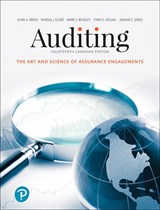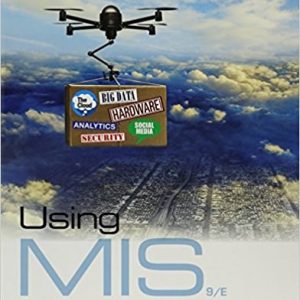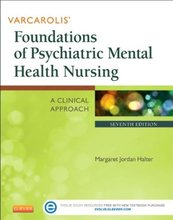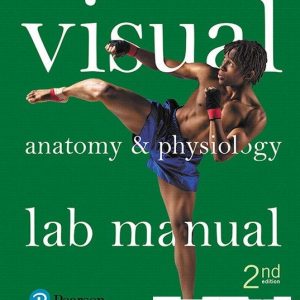Test Bank for Auditing: The Art and Science of Assurance Engagements, Fourteenth Canadian Edition Plus MyLab Accounting with Pearson eText — Package, 14th Edition digital download immediately after payment is complete.

Product details:
- ISBN-10 : 0132791560
- ISBN-13 : 978-0132791564
- Author: Alvin A. Arens
As the world shifts to a greater reliance on digital media, it is appropriate that this text evolves as well. This fifteenth edition is the first fully digital version of Auditing and Assurance Services. Instructors and students will find that, although the medium has changed, the content is fully consistent with prior editions. This ISBN is for the Pearson eText and may not include any media, website access codes, or print supplement. Auditing: The Art and Science of Assurance Engagements is an introduction to auditing and assurance services. It is intended for use in an introductory auditing course, for one-semester or two-semester instruction at the undergraduate or graduate level. The book’s primary emphasis is on the auditor’s decision-making process in a financial statement audit and, to a lesser degree, other types of audits and assurance engagements.
Table Of Contents:
- Chapter 1 The Demand for Audit and Other Assurance Services
- Introduction
- What are Assurance Engagements?
- What is Auditing?
- Report
- Why are Audits and Other Assurance Engagements Needed?
- Reducing Information Risk
- Common Types of Assurance Engagements
- Types of Auditors
- Accounting vs. Auditing
- Assurance and Nonassurance Services Offered by Public Accountants
- Nonassurance Services Offered by Public Accounting Firms
- Summary
- Review Questions
- Multiple Choice Questions
- Discussion Questions and Problems
- Professional Judgment Problems and Cases
- Applying Your Professional Judgment to Hillsburg Hardware
- Chapter 2 The Public Accounting Profession and Audit Quality
- Introduction
- An Overview of the Canadian Public Accounting Industry
- Public Accounting Firms
- Structure of Public Accounting Firms
- Requirements to be a Public Accountant
- Organizations Affecting the Canadian Public Accounting Profession
- Provincial CPA Organizations
- Public Company Accounting Oversight Board (PCAOB)
- Provincial Securities Commissions
- CPA Canada Assurance Standards
- Principles Underlying the Financial Statement Audit
- Personal Responsibilities
- Performance Responsibilities
- Reporting Responsibilities
- The Drivers of Audit Quality
- Quality Control
- Summary
- Review Questions
- Multiple Choice Questions
- Discussion Questions and Problems
- Professional Judgment Problems and Cases
- Applying Your Professional Judgment at Hillsburg
- Chapter 3 Professional Ethics and Legal Liability
- Introduction
- Professional Ethics and Public Accountants
- A Framework for Ethical Reasoning
- Obtain Relevant Facts and Identify the Ethical Issues
- Consider and Evaluate Courses of Action
- Ethical Blind Spots
- Professional Guidance on Ethical Conduct
- Public Protection
- Professional Colleagues
- The Independence Standard for Assurance Engagements
- Identify Threats
- Evaluate the Significance of the Threat
- Enforcement of the Code of Professional Conduct
- The Expectations Gap
- Reducing the Expectations Gap
- Audit Failure and Audit Liability
- Major Sources of Auditor Liability
- How Public Accountants Can Minimize Litigation Risk
- Summary
- Review Questions
- Multiple Choice Questions
- Discussion Questions and Problems
- Professional Judgment Problems and Cases
- Applying Your Professional Judgment to Hillsburg Hardware
- Chapter 4 Audit Responsibilities and Objectives
- Introduction
- Management’s Responsibilities
- Responsibilities of those Charged with Governance
- Auditor’s Responsibilities
- Auditors’ Responsibilities for Detecting Material Misstatements
- Auditor’s Responsibility for Related-Party Relationships and Transactions
- Auditor’s Responsibility to Consider Laws and Regulations
- Auditors’ Responsibility to Evaluate Going Concern
- Framework for Professional Judgment
- Professional Skepticism
- Financial Statement Cycles
- Cycle Approach to Segmenting an Audit
- Relationships Among Cycles
- Gather Sufficient and Appropriate Evidence
- Management Assertions
- Assertions About Classes of Transactions and Events
- Assertions About Account Balances
- An Overview of the Audit Process
- Client Acceptance
- Assess Risk of Material Misstatement
- Perform Risk Responses
- Summary
- Review Questions
- Multiple Choice Questions
- Discussion Questions and Problems
- Professional Judgment Problems and Cases
- Applying Your Professional Judgment to Hillsburg
- Chapter 5 Audit Evidence
- Introduction
- Nature of Audit Evidence
- Audit Evidence Decisions
- Persuasiveness of Evidence
- Sufficiency
- Combined Effect
- Types of Audit Procedures
- General Categories
- Inspection
- External Confirmation
- Analytical Procedures
- Use of Automated Tools and Techniques
- Appropriateness of Types of Procedures
- Cost of Types of Evidence
- Terms Used in Audit Procedures
- Design Analytical Procedures
- Compare Client and Industry Data
- Compare Client Data with Similar Prior-Period Data
- Compare Client Data With Client-Determined Expected Results
- Compare Client Data With Auditor-Determined Expected Results
- Precision of the Analytical Procedures
- Use of Audit Data Analytics and Advanced Technologies
- Planning, Performing, and Drawing Conclusions from ADAs
- Advanced Technologies
- Challenges for Auditors
- Documentation
- Contents and Organization
- Preparation of Working Papers
- Ownership of Working Papers
- Professional Skepticism, Evidence, and Documentation
- Appendix 5A: Common Financial Ratios
- Summary
- Review Questions
- Multiple Choice Questions and Task-Based Simulations
- Discussion Questions and Problems
- Professional Judgment Problems and Cases
- Applying Your Professional Judgment to Hillsburg Hardware
- Chapter 6 Client Acceptance, Preliminary Planning, and Materiality
- Introduction
- Planning for What Can Go Wrong
People also search:
Auditing: The Art and Science of Assurance Engagements
auditing the art and science of assurance engagements solutions
|
difference between audit and assurance engagement |





